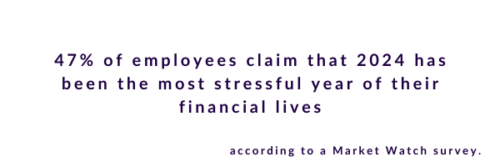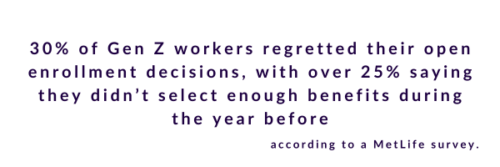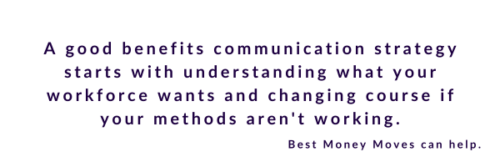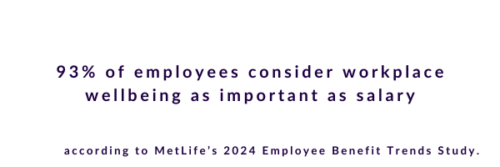5 simple ways to increase engagement for financial wellness benefits. 5 proven strategies to increase employee engagement for your financial wellness programs.
Financial wellness benefits are more important than ever before, as financial stress weighs heavily on Americans. Nearly half of all respondents (47%) in a recent MarketWatch survey claim that 2024 was the most stressful year of their financial lives.
Financial wellness benefits offer the resources and education required to curtail the effects of long-term financial stress. For employees, they provide financial security, customized guidance and peace of mind beyond their primary source of compensation. For employers, the right financial benefits help attract talent and keep their workforce satisfied.
According to a TIAA survey, 65 percent of Gen Zers and 61 percent of millennials believe it is a company’s responsibility to help employees improve and maintain their financial wellness. However, despite these concerns, financial wellness programs may go overlooked among the other, more common benefits an employer may provide.
To improve engagement in your financial wellness programs, implement the following five strategies with your workforce.

1. Clarify why financial wellness is important.
An open line of communication is the best way to maximize the benefits your employees get from your benefits programs. This goes beyond initial presentations and quarterly emails. Be sure to clarify the resources your wellness program offers and why they are important. Building habits that promote financial wellness are proven to eliminate stress and set your employees up for success.
Effective communication is key to ensuring employees are aware of and understand the benefits available to them. Consistently check in with your workforce to find out what resources will help them best and explain how financial wellness is the solution. This may include communication via emails, messaging channels, newsletters and in-person meetings. To see engagement increase, it’s important to use as many lines of communication as possible.
2. Explain how financial wellness programs can help.
Although the majority of Americans are stressed about finances, employees don’t take advantage of financial wellness benefits and they don’t understand how they work. But the fix is simple. Workshops, webinars and coaching sessions can all be used to explain how the benefits work and how they can improve employees’ financial situations.
For example, budgeting programs allow users to track expenses and see where their spending might be causing issues. Educational resources like articles and videos provide the necessary context to their pressing financial questions. Without understanding why financial skills are necessary, employees are unlikely to use the programs being offered to them.
Financial wellness programs can seem complicated, but the goal is to make them more approachable to the employees who need them most.
3. Understand the necessity of personalized benefits solutions.
Benefits might feel out of reach for many of your employees due to their current circumstances. Instead of using a one-size-fits-all approach, try personalizing your benefits to match the needs of your team. Employees who resonate with their benefits are more likely to use and see results from them. As Deloitte’s 2023 Employer Health Benefits Survey reports, “Today’s workers need a much more customized experience to feel appreciated and valued for what they do.”
Speak directly with employees to find out where their financial strengths and weaknesses lie. With this information, you can understand exactly what your staff needs. For example, an employee fresh out of college will likely be more interested in student loan repayment assistance, while older employees might get the most from family planning or retirement resources.
Personalization ensures that the benefits are relevant and valuable to each individual, leading to higher engagement rates.
4. Provide incentives for using financial wellness benefits programs.
Incentivizing employees for their efforts while using financial wellness programs can be a powerful strategy to improve engagement. For example, consider offering rewards for participation or reaching certain financial milestones. Instead of forcing benefits communication, provide employees the opportunity to opt-in using friendly competitions or rewards programs.
Also, consider highlighting the success stories of those who already use your offerings. Employees who see their peers benefiting from financial wellness programs may be more inclined to take action. By providing real rewards, you can encourage employees to engage with the programs and create a positive association with financial wellness.
5. Consider employee feedback.
Alongside consistent communication, learning from feedback is the best way to improve engagement in your benefits.
Use this feedback to develop your strategy to ensure the needs of your employees are being met. Employees who see their feedback lead to real changes are more likely to feel invested in and engaged with the financial wellness benefits offered. These programs are built for employees, so it’s important to incorporate suggestions that are provided by them.
Improving engagement in financial wellness benefits requires a concerted effort, but is well worth the investment. Financial stress is one of the most powerful detractors of productivity and well-being. Financial wellness programs are the key to improving employee financial health and contributing to a satisfied workforce.
Best Money Moves is a mobile-first financial wellness solution designed to help dial down employees’ most top-of-mind financial stresses. As an easy-to-use financial well-being solution, Best Money Moves offers comprehensive support toward any money-related goal. With 1:1 money coaching, budgeting tools and other resources, our AI platform is designed to help improve employee financial well-being.
Whether it be retirement planning or securing a mortgage, Best Money Moves can guide employees through the most difficult financial times and topics. We have robust benefits options for employers, regardless of their benefits budget.
Our dedicated resources, partner offerings and 1000+ article library make Best Money Moves a leading benefit in bettering employee financial wellness.
To learn more about Best Money Moves Financial Wellness Platform, let’s schedule a call. Contact us and we’ll reach out to you soon.









